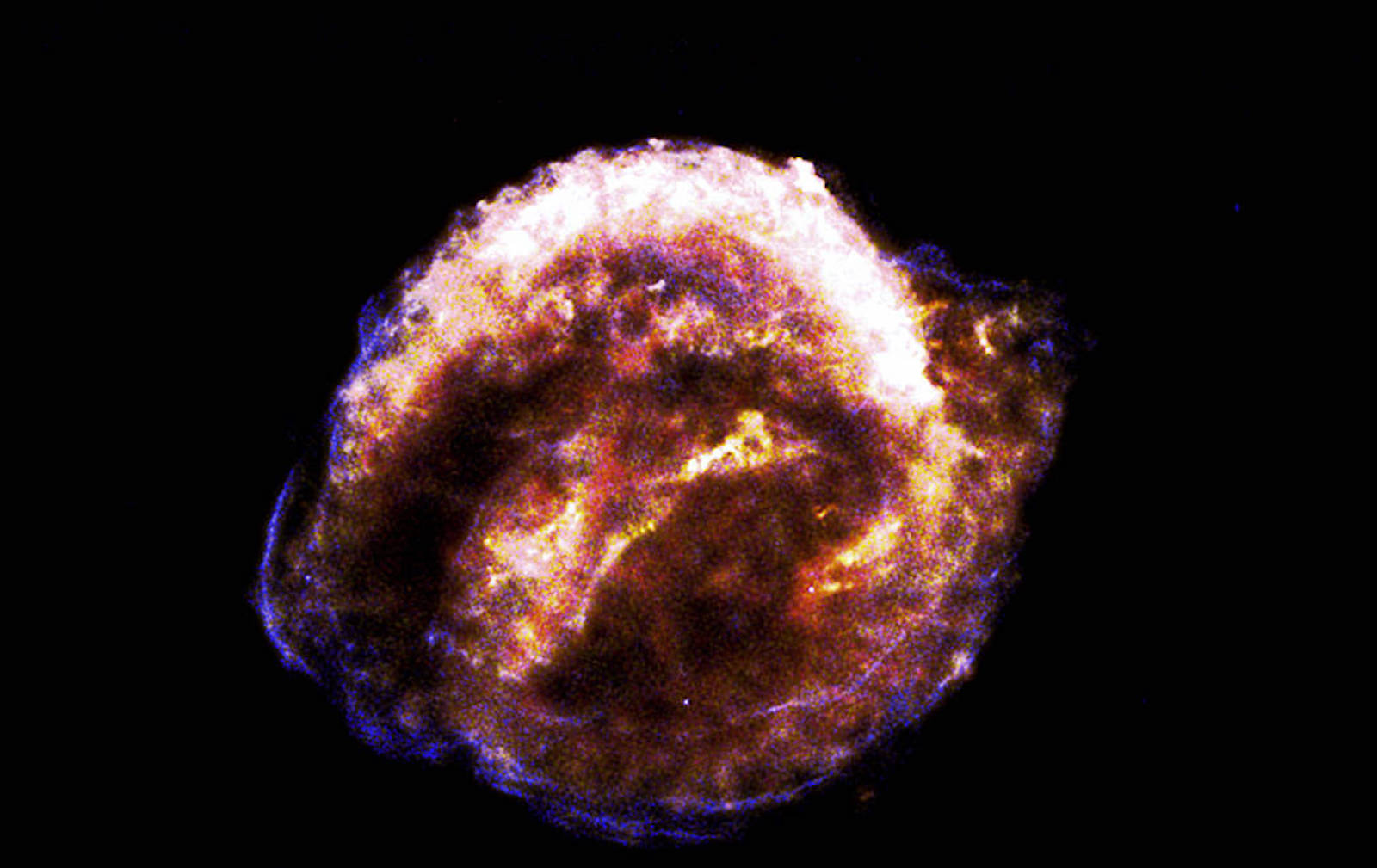The end of the universe may be marked by 'black dwarf supernova' explosions
A spectacular fireworks show will light up an otherwise pitch black universe.

At the end of the universe, long after the last shining stars flicker out, there might be one final set of explosions. Called black dwarf supernovae, these dazzling blasts will herald in the everlasting darkness as the universe sinks into dormancy, a new study suggests.
These newly proposed supernovas are a special breed that haven't yet happened anywhere in the universe. Black dwarf supernovas might be the last events that happen in the universe, which by then will be a largely empty place where the temperature approaches absolute zero.
Stars' lives and deaths are determined by their mass. Large ones 10 or more times the mass of the sun explode as supernovas and can become black holes. But smaller ones, which don't produce heavier elements through the nuclear fusion at their cores, end their lives as small dense husks of stars known as white dwarfs. Over trillions of years, they dim and turn into frozen, lightless objects known as black dwarfs. A new paper, to be published in the journal Monthly Notices of the Royal Astronomical Society, describes how these black dwarfs may ultimately release the final bits of light in the universe as they explode as supernovas.
Related: 15 amazing images of stars
The black dwarf supernovas would form through a quantum process known as pycnonuclear fusion. Stars are normally fueled by thermonuclear fusion, where high temperatures and pressures overcome atomic nuclei's natural electric repulsion, allowing atoms to fuse into new, heavier elements. But in pycnonuclear fusion, quantum tunneling allows atomic nuclei to get closer to each other than they normally would. Pycnonuclear fusion can thus very slowly turn the elements in the white dwarf into iron –- the last element that can be created by fusion.
"These reactions take an insanely long time," said study author Matt Caplan, theoretical physicist at Illinois State University. "You could wait a million years and not see a single fusion reaction in a black dwarf."
By comparison, the sun fuses more than 10^38 protons per second. To convert a black dwarf into iron by pycnonuclear fusion would take a mind-boggling 10^1,100 and 10 ^32,000 years. If you wrote out all the zeros in these numbers, they'd take up the length of a paragraph to a whole book chapter, respectively.
Get the world’s most fascinating discoveries delivered straight to your inbox.
"These time scales are enormous," said Fred Adams, astrophysicist at the University of Michigan, who was not involved in the new research. "We expect the largest possible black holes to be evaporated on time scales of only about 10 to the 100 years, which is instantaneous compared to the times discussed in the paper."
Once the black dwarf was mostly iron, it would be crushed by its own mass. This runaway collapse — the supernova — would trigger a huge implosion that ejects the outer layers of the leftover black dwarf. In larger stars today, this iron pileup is also what leads to the more common so-called core-collapse supernovas.
Black dwarf supernovae, however, would only occur in black dwarf stars with masses between 1.16 and 1.35 times that of the sun. Those black dwarf stars are in turn created from typical stars that start off with six to 10 times the mass of the sun.
"[It] is not exactly a rare population, but also not the most common," Caplan said.
In fact, these stars make up about 1% of all stars today, and Caplan estimates there will be about a billion trillion (10^21) of these supernovae before the end of the universe. Since the black dwarfs have fairly low masses, the black dwarf supernovas would probably be a bit smaller than ones occurring in the present universe, but still spectacular in an otherwise pitch-black universe.
After these final last gasps of light, nothing left in the universe will be able to explode or shine. So while the universe will seemingly end in ice, there will be a spark of fire along the way.
Originally published on Live Science.

Mara Johnson-Groh is a contributing writer for Live Science. She writes about everything under the sun, and even things beyond it, for a variety of publications including Discover, Science News, Scientific American, Eos and more, and is also a science writer for NASA. Mara has a bachelor's degree in physics and Scandinavian studies from Gustavus Adolphus College in Minnesota and a master's degree in astronomy from the University of Victoria in Canada.


